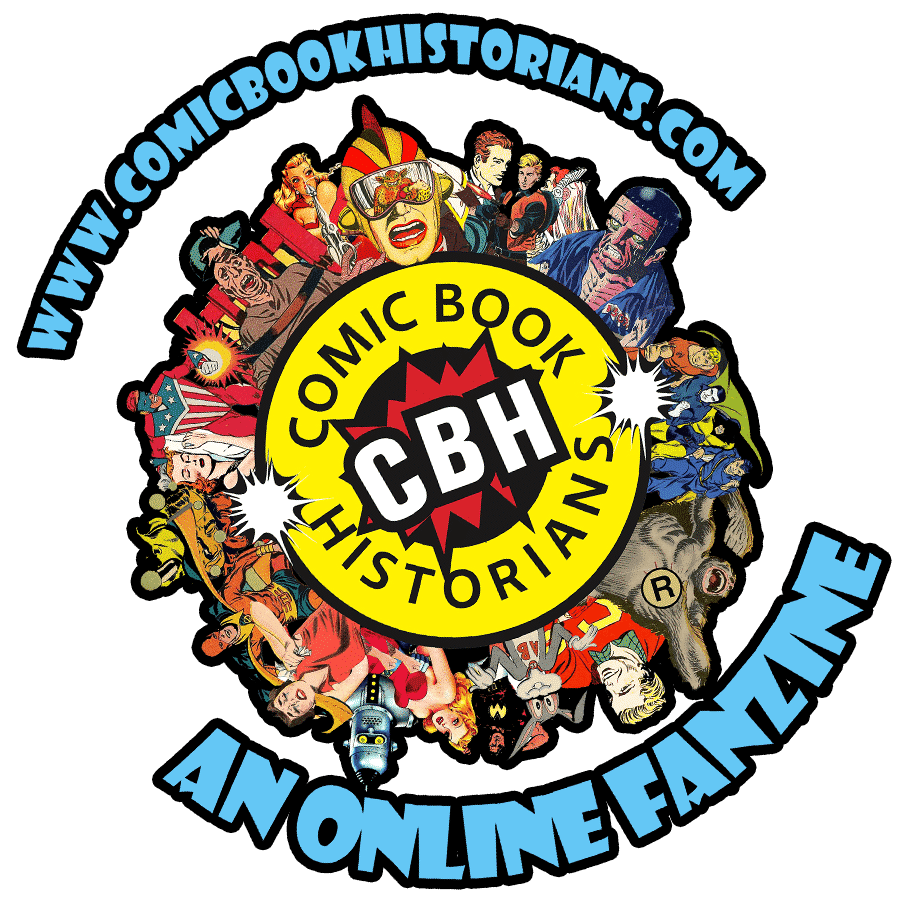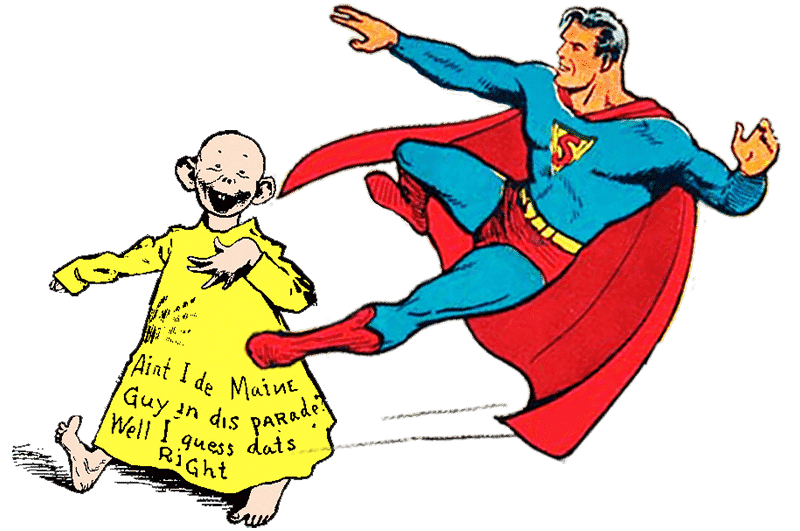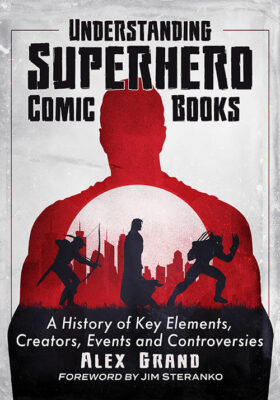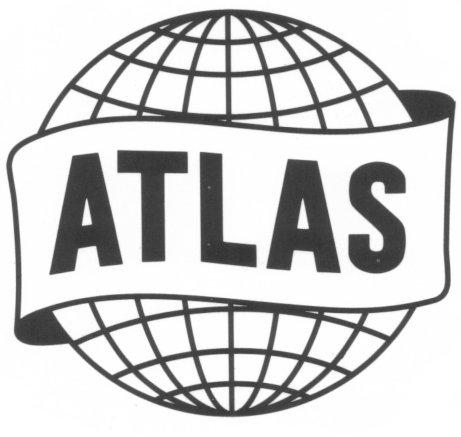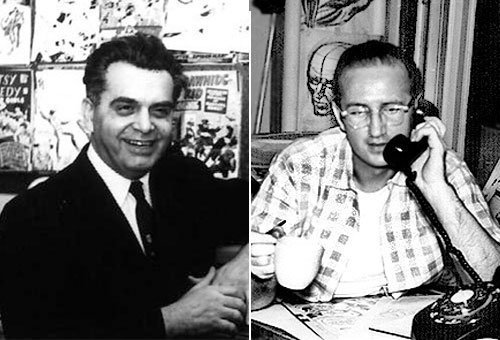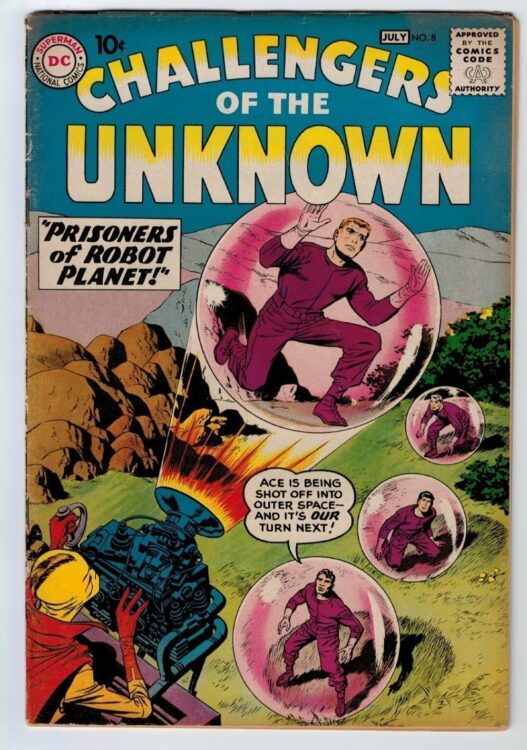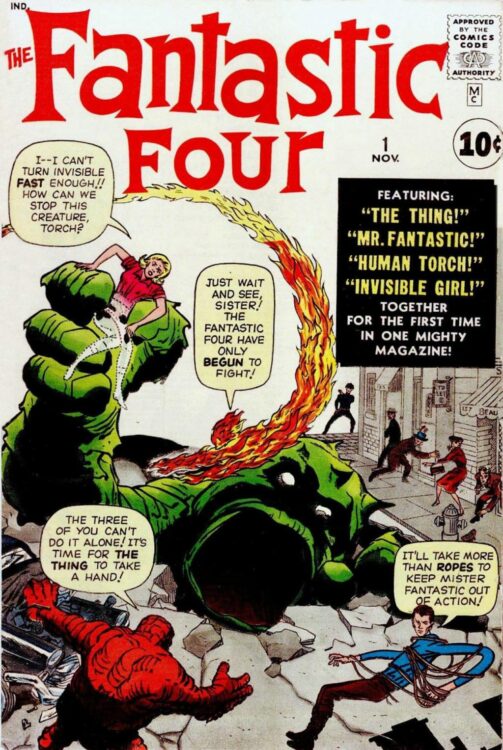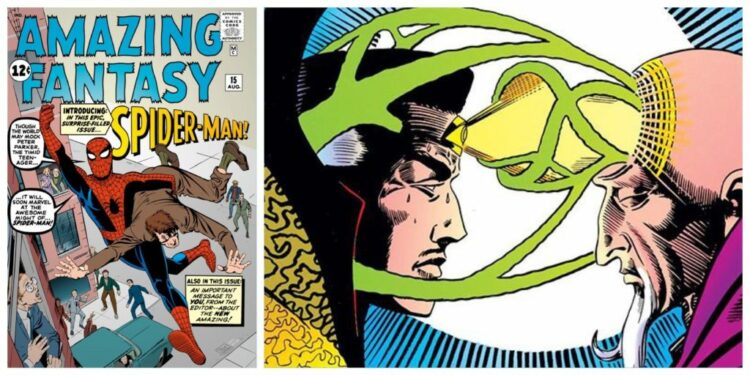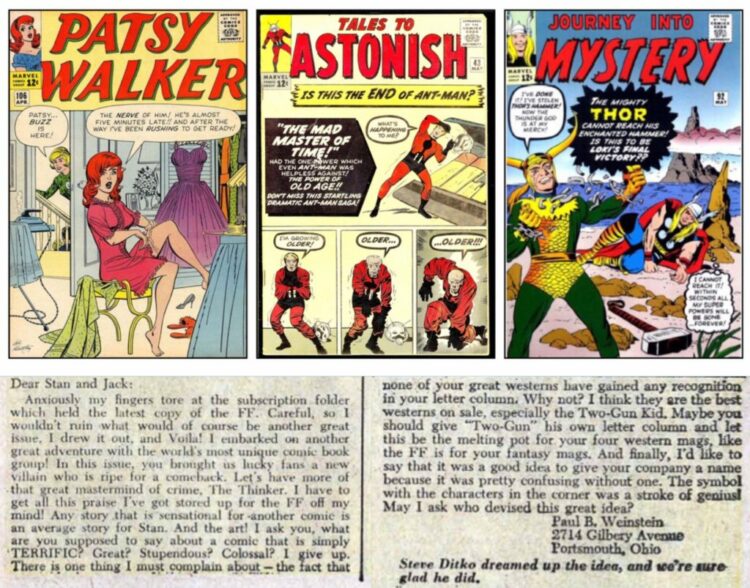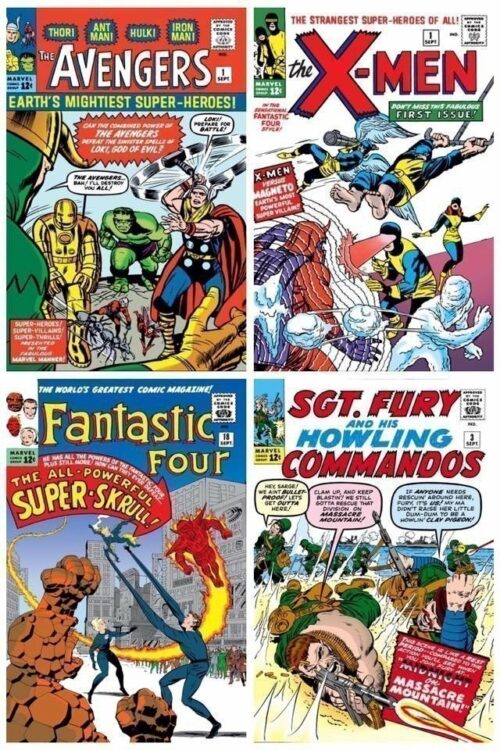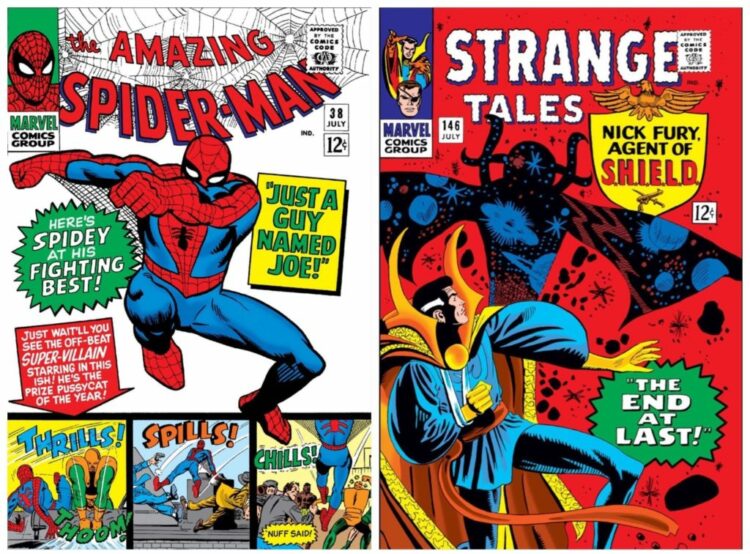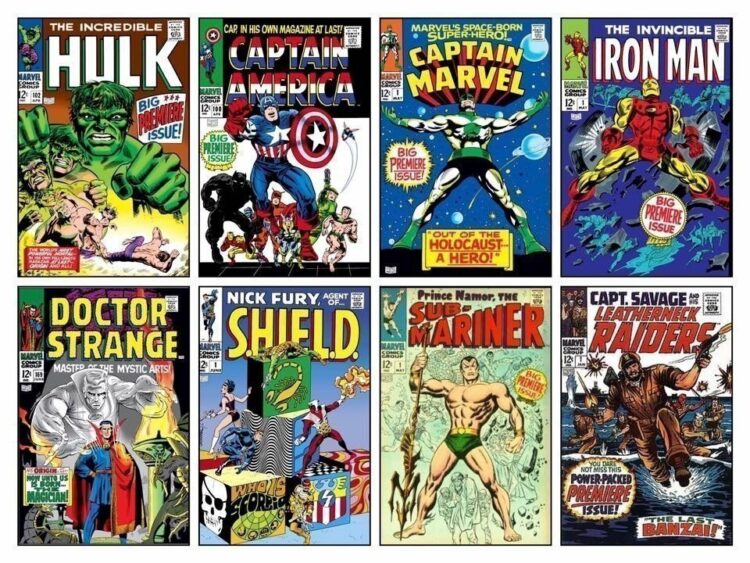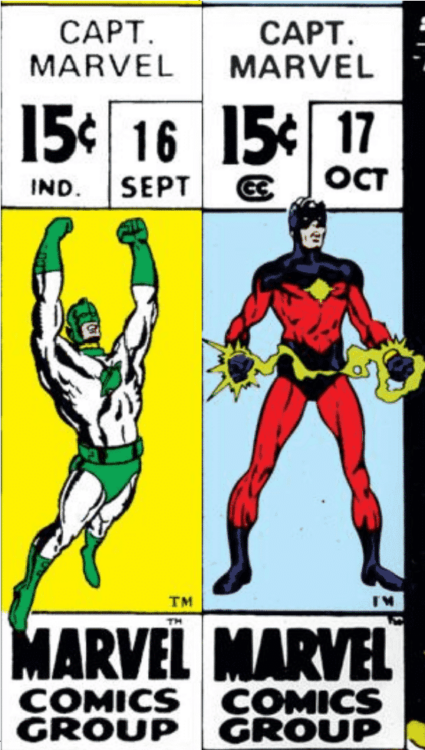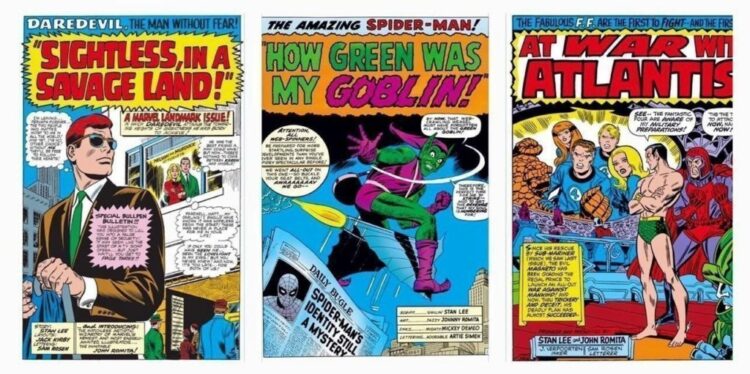The 1957 Atlas Implosion’s effect on Marvel’s Silver Age by Alex Grand
Read Alex Grand’s Understanding Superhero Comic Books published by McFarland Books in 2023 with Foreword by Jim Steranko with editorial reviews by comic book professionals, Jim Shooter, Tom Palmer, Tom DeFalco, Danny Fingeroth, Alex Segura, Carl Potts, Guy Dorian Sr. and more.
In the meantime enjoy the show:
Welcome to the second installment of CBH, today we’re going to briefly touch upon the 1957 Atlas Implosion and its effect on Marvel’s Silver Age leading up to 1968 acquisition of Marvel by Perfect film & Chemical with its switchover to Curtis Circulation as its main distributor. This talk will also include some of the interesting creators along the way, as well as how to interpret the logos on the covers of this time period.
Read below and/or click to view the video:
Martin Goodman Comics (later known as Marvel) had an Atlas logo which represented Goodman’s distribution company, not the actual comic book line.
In 1957, Martin Goodman closed Atlas distribution to use the cheaper American News Distribution company. Unfortunately, American News Distribution subsequently went out of business (Due to many factors, but one of them was losing Dell comic book company as a client).
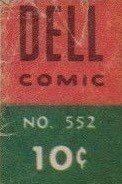
Goodman realized what a mistake this was and ended up having to use Independent News (IND) instead to distribute his comic books. IND was owned by what was later known as DC Comics and viciously limited Goodman from a heavy comic book load to a small fraction of its output to 8 monthly titles and lost 1-2 month of publication. Stan Lee the editor decided to make 16 bimonthly titles instead for diversity, and used up inventory of already made comics putting many artists and writers out of work. This is called the “Atlas Implosion.” This explains why the Atlas logo 8/1957 on the top left changed to the initials, IND 11/1957. IND held this contract until 1968, but rising profits from the later Marvel caused IND to allow 11 monthly titles in 1963.
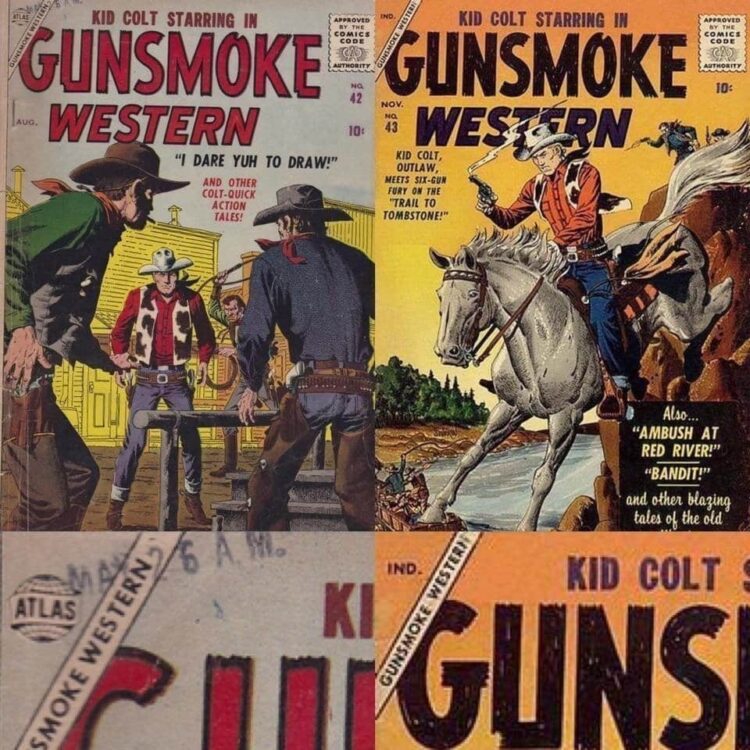
This was a huge fall for editor Stan Lee, but he did have some star artists like Joe Maneely and Matt Baker, as well as some inventory to use up. Unfortunately, both died in their thirties with Joe Maneely dying in a train incident in 1958 and Matt Baker dying of a heart attack in 1959.
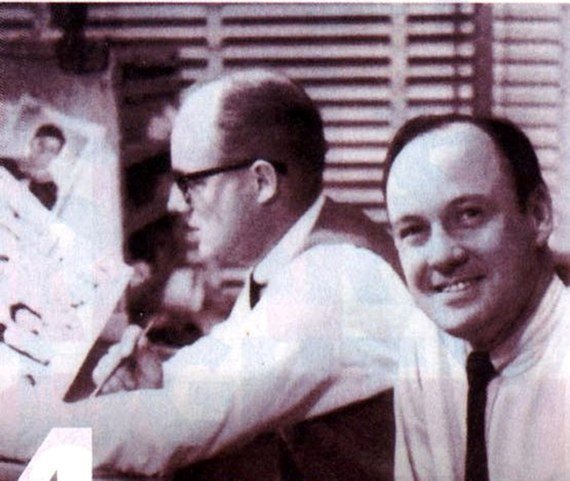
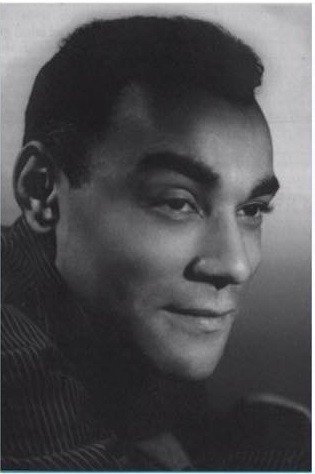
This left a void of star talent which was soon filled (out of basic necessity) by Jack Kirby and Steve Ditko.
In 1959, Jack Kirby needed work. Due to a difference in opinion in who gets some royalty money of the Sky Masters newspaper strip between DC Editor Jack Schiff and the team of Kirby/Wood, a lawsuit between the two caused Jack to lose his working assignments over at DC including his famous Challengers of the Unknown, and he needed a solid paying gig to support his family. He then went to work at Martin Goodman comics for whom he co-created Captain America.
Steve Ditko was young and experimenting with various surreal styles of artistic storytelling, and worked for several companies including Charlton, with the company later to be known as Marvel being one of them.
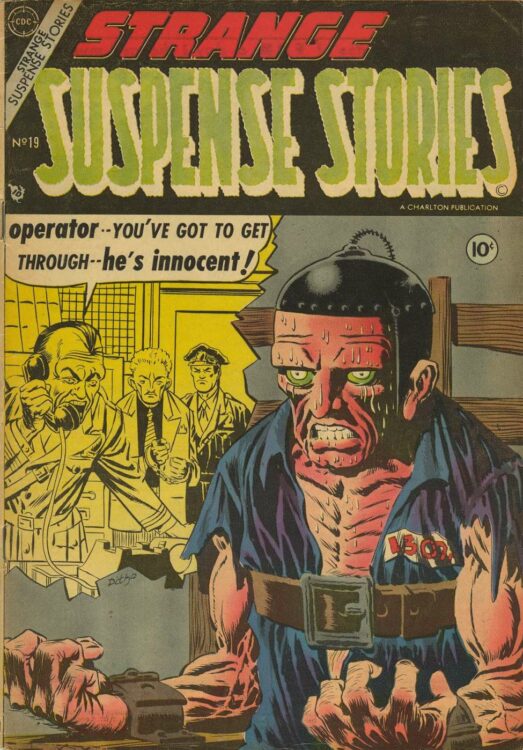 Click this text to buy Ditko Charlton reprint and read
Click this text to buy Ditko Charlton reprint and read
With this new artistic infusion into Martin Goodman’s Comics company, Marvel’s Silver Age was soon to be in full swing. Jack Kirby finished his last Sky Masters strip in February 1961, and he soon thereafter co-creates with Stan Lee, Fantastic Four 1 cover dated 11/1961. As you can see, there is no Marvel logo here, but the distributor is clearly labeled as Independent News Distribution (IND).
Steve Ditko applied his visceral human artistic sense in co-creating Spider-Man in 1961 and Dr Strange in 1963 with Stan Lee, and with the villains and heroes that Kirby and Ditko co-created with Lee, a Marvel Universe was created.
In 1963, Goodman comics released books to have the Marvel Comics Group corner box, which now labels the Martin Goodman company comics line as Marvel, distinguishing it from the logo of its distributor, IND. In the letters column of Fantastic Four 18, 1963, Stan Lee writes that the Marvel corner box was Steve Ditko’s idea.
Kirby co-created and penciled an incredible amount of comics per month including this cover date of 9/1963 where he worked on 4 complete issues with Stan Lee, which is an extraordinary amount of production out of one human being.
Here is Kirby/Everett’s initial Daredevil design from the cover of issue 1, 1964 on the left. Wally Wood had left Mad magazine and briefly joined Marvel I’m 1965. The middle image is Wally Wood’s first redesign of the costume from issue 5 which Stan acknowledges on the bottom of the same page shown below. Then Wood’s next and definitive costume redesign from issue 7, which ultimately recreated and (possibly) saved the character from obscurity. Wally Wood was unhappy with his working situation at Marvel and left the company the same year.
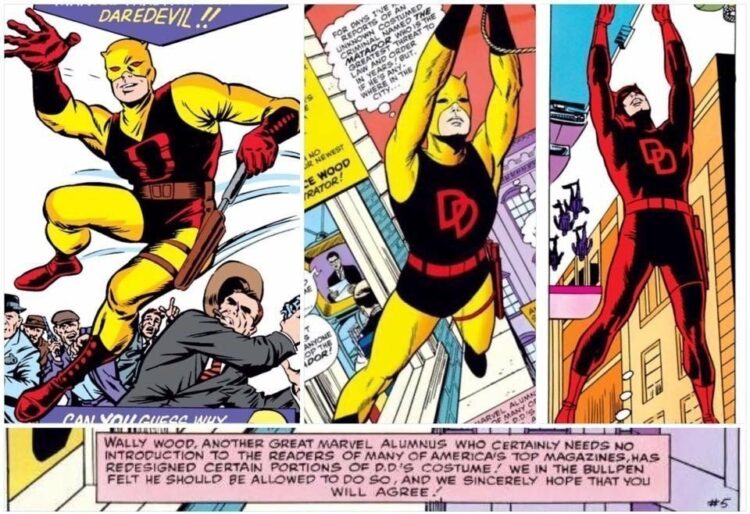
Steve Ditko grew unhappy with his situation at Marvel and left in 1966. He has written several essays on what that situation is, and anyone interested should purchase those essays. Here are his last two issues he worked on for Marvel.
In 1968, DC was bought by Kinney and Marvel was bought by Perfect Film. During this flux, Goodman pushed the DC owned Independent News to lift restrictions on the number of comics they’d distribute and a whole slew of characters suddenly got their own comics with IND still on the top left until roughly middle of 1969.
Marvel’s comic book distribution would soon switch to the Perfect Film owned Curtis Circulation with the distributor logo changing from IND to CC. At this point, Marvel would print as many comics as Marvel wanted in 1969 paving the way for the 1970s.
John Romita Sr was Marvel’s go-to guy when a major artist/co-creator left Marvel in the 60s. When Wally Wood left after some disagreements in 1965, John Romita Sr took over in Daredevil 12. When Steve Ditko left in 1966, then Romita Sr took over in Spider-Man 39. Jack Kirby left Marvel in 1970 and John Romita Sr again took over in Fantastic Four 103. Here are the first splash pages to those 3 issues. Each time an artist would take over from Romita Sr.
So in a sense, the Atlas implosion put enough stress on the comic book line, specifically Stan Lee, where with the death of a couple star artists, an unfortunate business deal with Kirby at DC, an expressive Steve Ditko, and a wandering Wally Wood came together in a boiling pot of creativity where there was a sense of all or nothing, try anything and see what works, we have nothing to lose, let’s do something new, see where this goes attitude that led to a reliable comics line, and ultimately led to the Marvel Comics group maturing toward the latter part of 1969. This framework would later be identified as Marvel Comics Silver Age.
Join us for more discussion at our Facebook group
check out our CBH documentary videos on our CBH Youtube Channel
get some historic comic book shirts, pillows, etc at CBH Merchandise
check out our CBH Podcast available on Apple Podcasts, Google PlayerFM and Stitcher.
Use of images are not intended to infringe on copyright, but merely used for academic purpose.
Gunsmoke Western ©Marvel, Challengers of the Unknown ©DC, Fantastic Four ©Marvel, Strange Tales ©Marvel, Atlas Logo ©Nemesis Group, Amazing Fantasy ©Marvel, Patsy Walker ©Marvel, Tales to Astonish ©Marvel, Journey into Mystery ©Marvel, Avengers ©Marvel, The X-Men ©Marvel, Sgt Fury and his Howling Commandos ©Marvel, Daredevil ©Marvel, Amazing Spider-Man ©Marvel, The Incredible Hulk ©Marvel, Captain Marvel ©Marvel, The Invincible Iron Man ©Marvel, Doctor Strange ©Marvel, Nick Fury Agent of S.H.I.E.L.D ©Marvel, Sub-Mariner ©Marvel, Capt. Savage and his Leatherneck Raiders ©Marvel, Photos ©Their Respective Copyrightholders
